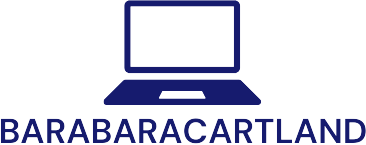Table of Contents
ToggleIn a world where everyone seems to be a polyglot, learning a new language can feel like trying to find a needle in a haystack—while blindfolded. Enter Computer Assisted Language Learning (CALL), the superhero of language education. With its high-tech gadgets and interactive platforms, CALL transforms the daunting task of language acquisition into an engaging adventure.
Overview of Computer Assisted Language Learning
Computer Assisted Language Learning (CALL) integrates technology to enhance language acquisition. Various software programs and applications facilitate interactive learning experiences. Language learners access resources such as multimedia content, exercises, and quizzes through this approach.
CALL promotes self-paced learning, allowing learners to progress according to their individual needs. Immediate feedback comes from interactive activities, reinforcing comprehension and retention. Adaptive learning technologies tailor experiences to fit diverse proficiency levels, maximizing efficiency.
Different methods characterize CALL, including computer-based training programs and web-based learning platforms. Mobile applications expand access, enabling learners to practice on the go. Blended learning environments combine traditional classroom experiences with online modules, creating a dynamic learning atmosphere.
Numerous studies demonstrate the effectiveness of CALL in fostering motivation and engagement. Learners often show increased interest in their studies when utilizing interactive tools. Critical thinking and problem-solving skills also develop through simulated real-life scenarios.
CALL incorporates social learning elements, promoting collaboration between learners. Online forums and discussion boards facilitate peer interaction, enhancing understanding through dialogue. As a result, learners gain exposure to diverse perspectives and language use.
Institutions adopting CALL report improved language proficiency outcomes among students. Innovative tools continuously evolve, keeping pace with technological advancements. Overall, CALL represents a significant advancement in language education, bridging gaps and enriching the learning journey.
Benefits of Computer Assisted Language Learning


Computer Assisted Language Learning (CALL) offers numerous benefits that enhance the language acquisition process.
Enhanced Engagement
Engagement levels rise significantly when learners interact with multimedia resources. Interactive exercises stimulate interest, making the learning experience enjoyable. Gamified elements often accompany these resources, motivating learners to participate actively. Immediate feedback promotes a sense of accomplishment, reinforcing correct responses and guiding improvements. Additionally, immersive simulations replicate real-life scenarios, helping students apply their knowledge in practical contexts. Engaging platforms foster collaboration among peers, encouraging discussion and shared insights. Through these dynamics, learners develop a deeper connection to the language.
Personalized Learning Experience
Personalization transforms language learning into a tailored journey. Adaptive technologies assess proficiency and adjust content accordingly to suit individual needs. Learners progress at their own pace, eliminating the pressure of traditional classrooms. Customized exercises target specific weaknesses, enhancing overall competency. Regular progress tracking enables students to identify areas for improvement and celebrate milestones. Moreover, CALL often integrates various learning styles, accommodating auditory and visual preferences. This versatility ensures that each learner receives an experience that aligns with their unique goals and aspirations.
Tools and Technologies in Computer Assisted Language Learning
CALL utilizes various tools and technologies to streamline language acquisition. These resources enhance engagement and boost learner outcomes.
Language Learning Software
Language learning software plays a crucial role in CALL. Programs such as Rosetta Stone and Duolingo offer interactive lessons and gamified experiences. Features include speech recognition, allowing users to practice pronunciation in real-time. Moreover, these platforms provide a wide range of vocabulary and grammar exercises tailored to different proficiency levels. Analytics track progress and highlight areas needing improvement. Learners often utilize forums within these systems, fostering collaboration and peer support.
Mobile Applications
Mobile applications have transformed the way learners access language education. Applications like Babbel and Memrise provide opportunities to practice on the go. They offer bite-sized lessons, enabling users to learn during brief moments in their daily routines. Accessibility remains a significant advantage, as learners can engage with the material anytime, anywhere. Additionally, many apps incorporate spaced repetition techniques, improving long-term retention of vocabulary and concepts. Social features also allow users to connect, share progress, and motivate each other.
Strategies for Effective Implementation
Integrating CALL into the language learning process requires strategic planning. Establishing clear objectives aligns technology with educational goals, guiding the implementation process effectively. Selecting appropriate software ensures that tools match the skill levels and learning preferences of students. Providing ongoing training for educators equips them with the necessary skills to utilize CALL effectively.
Utilizing data analytics can help track student progress and adapt lessons based on individual needs. Engaging learners through interactive activities enhances their motivation and encourages participation. Combining different methods, like blended learning and mobile applications, supports diverse learning styles and creates a more inclusive environment.
Fostering a sense of community through online discussion boards can encourage collaboration among learners. Building assessments into the learning process provides immediate feedback and identifies areas for improvement. Encouraging learners to set personal goals gives them ownership of their language learning journey.
Implementing gamified elements captures and retains student interest, reinforcing the enjoyment of learning. Regular updates and technological advancements should be monitored to keep the tools effective and relevant. Adapting strategies based on feedback enhances the overall learning experience and maximizes the effectiveness of CALL programs.
Structuring lessons to highlight real-life applications ensures that learners can relate to the content meaningfully. Encouraging peer-to-peer interactions creates an environment where learners support and motivate each other. Emphasizing personalized learning paths caters to individual strengths and weaknesses, further enhancing the effectiveness of CALL initiatives.
Challenges and Limitations
Despite the many advantages of Computer Assisted Language Learning (CALL), several challenges exist. One significant issue is access to technology. Not all learners have reliable access to computers or high-speed internet, which can hinder participation and success in CALL programs. Additionally, differences in technological skills among learners create disparities in effective use of CALL tools.
Quality of content also poses a concern. Some software may offer outdated or irrelevant materials, limiting their effectiveness in a fast-evolving digital landscape. Learners might disengage due to resources that do not align with current language usage or educational standards. Furthermore, reliance on technology can lead to decreased interaction with native speakers, which is crucial for developing conversational skills.
Instructor involvement remains crucial. Effective integration of CALL requires ongoing training for educators. Inadequate training prevents teachers from maximizing the potential of these tools, resulting in suboptimal learner experiences. Student motivation, while often enhanced through interactive content, can wane without strategic engagement methods.
Another limitation relates to assessment and feedback. Instant feedback in CALL environments may mislead learners if not accompanied by proper evaluation criteria. Inaccurate assessments can lead to gaps in language understanding and proficiency.
Lastly, cultural context affects the learning experience. Some CALL programs may not adequately address cultural nuances, impacting learners’ ability to use language effectively in real-world situations. Addressing these limitations demands careful planning and adaptation by educators and institutions.




